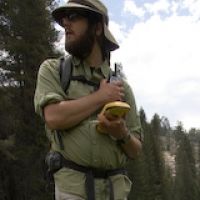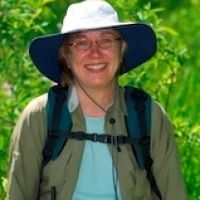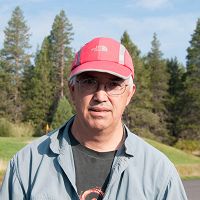Lucas et al., 2008
Investigating Meadow Hydrology and Hyporeic Exchange.
Lucas, R., Conklin, M., Tyler, S., Esser, B. (2008)
Fall meeting, American Geophysical Union, December 2008. 89(53). Abstract H21L-06.
-
Sierra, GRAD STUDENT
-
Sierra, INVESTIGATOR
-
Sierra, COLLABORATOR
Abstract
Using a combination of heat and geochemical tracers, the groundwater-surface water interactions in the stream/meadow complex running the length of Long Meadow (1.5 km long) in Sequoia National Park were investigated. Specifically we were quantifying subsurface discharge, an important source of meadow moisture following the cessation of snowmelt. A distributed temperature system (DTS), with two-meter spatial resolution and two-minute temporal resolution, was deployed in the stream, enabling the capture of diurnal swings in surface water-temperatures over the course of five days. Point temperature sensors (Hobo Tidbits) were deployed to also assess the vertical temperature profile and stratification within a number of the stream pools. Water samples were collected to determine the activity of radon-222 (3.8 day half-life) as a proxy for groundwater discharge. Temperature and pressure head data were collected from existing monitoring wells and piezometers. The high spatial and temporal resolution of the DTS enabled us to locate specific thermal anomalies in the longitudinal stream temperature profile, indicative of groundwater discharge. Some of these anomalies occurred in pools, up to 130 cm deep. In spite of the small size of the pools, temperature profiles exhibited diurnal polymictic behavior with mixing at night and stratification developing during the day. Cooler temperatures at the pond bottoms were attributed to groundwater upwelling. This was confirmed in a large pool through observation of high radon activity near the pool bottom. Highest radon activity in the pool was found in bottom sediment porewater, low activity was found near the pool surface, and intermediate activity was observed in deeper water. Due to the fractured rock system underlying the meadow, groundwater upwelling is spatially heterogeneous. As the stream dries, it becomes intermittent, with wet portions corresponding to upwelling regions. Well/piezometer clusters strategically placed in upwelling zones in the meadow also indicate groundwater discharge at the time of this experiment. Using an energy and mass balance, preliminary estimates have been made of groundwater upwelling.
Citation
Lucas, R., Conklin, M., Tyler, S., Esser, B. (2008): Investigating Meadow Hydrology and Hyporeic Exchange. Fall meeting, American Geophysical Union, December 2008. 89(53). Abstract H21L-06..
Explore Further



